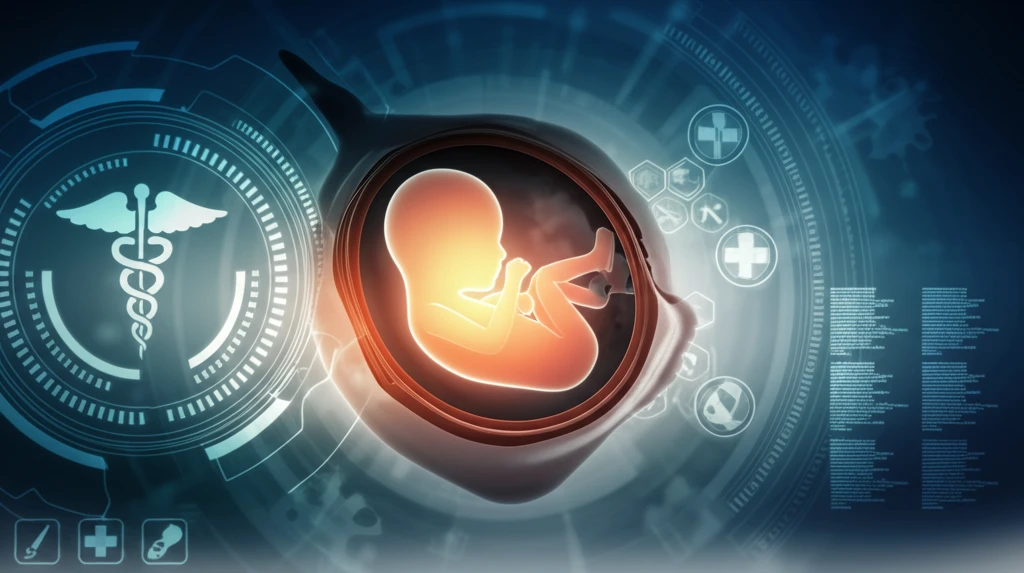
Foot Length in Early Sonography: A New Perspective on Fetal Development
"Discover how fetal foot length measurements during early pregnancy sonography offer valuable insights into gestational age and potential developmental abnormalities."
For nearly a century, medical professionals have recognized the correlation between a baby's gestational age (GA) and the length of its foot (FT). Initial research, conducted almost a century ago, examined 704 fetal specimens and established this link. The insights gained from this early work continue to inform modern prenatal care.
Modern studies using ultrasound technology have continued to confirm this relationship in utero, in abortus, in stillborns, and in neonates to other measurements. Normograms, or standard growth charts, have been developed for the first trimester and later stages of pregnancy, allowing doctors to assess gestational age and monitor fetal development. The use of foot length in determining gestational age is an established practice.
However, there is limited information on the relationship between fetal foot length and other key fetal measurements in early pregnancy. This is particularly relevant when healthcare providers suspect abnormalities in early gestation. This article will explore the value of fetal foot length measurements in relation to other fetal measurements taken between 10 and 16 weeks of gestation, potentially offering a new, accessible approach to early prenatal assessment.
Why Fetal Foot Length Matters in Early Pregnancy Sonography

A research study was conducted between March 7, 2014, and September 7, 2016, involving women attending routine obstetric appointments with normal pregnancies. Transabdominal ultrasound scans were performed utilizing advanced equipment (Accuvix V20 Prestige, Medison with a 4–8 MHz volumetric transducer or EPIQ 7, Philips with X6-1 matrix transducer). Key fetal measurements, including biparietal diameter (BPD), head circumference (HC), abdominal circumference (AC), femur length (FL), and foot length (FT), were meticulously taken in millimeters. If the patient presented before completing 15 weeks of pregnancy, the crown rump length (CRL) was also measured.
- Accurate Gestational Age Estimation: Fetal foot length provides a reliable estimate of gestational age in early pregnancy, comparable to traditional methods like crown rump length.
- Early Detection of Abnormalities: Deviations in the expected foot length-to-other measurement ratios can signal potential skeletal dysplasias or chromosomal abnormalities.
- Improved Diagnostic Accuracy: Combining foot length measurements with other fetal biometrics enhances the overall accuracy of gestational age assessment.
- Non-Invasive Assessment: Ultrasound measurement of fetal foot length is a non-invasive procedure, posing minimal risk to the mother and fetus.
The Future of Fetal Foot Length in Prenatal Care
The study concludes that fetal foot length is a valuable and accurate parameter for estimating gestational age during early pregnancy. Integrating foot length measurements with other standard fetal biometrics can improve the reliability of prenatal assessments. Awareness of the gestational age-dependent nature of fetal measurement ratios is crucial for accurate detection of potential fetal abnormalities. Further research with larger sample sizes is needed to confirm these findings and refine the application of fetal foot length in prenatal diagnostics.
